Did you take the UW Campus History Quiz? Below, see how many answers you got right.
QUESTION 1

There were approximately 200 pioneer settlers in Seattle in 1861. The Territorial University, as the UW was then known, served as a primary school as well as a university. In fact, when it opened there were only two college-age students among its 30 students. (University of Washington, The Campus History Series, pages 9-11.)
QUESTION 2
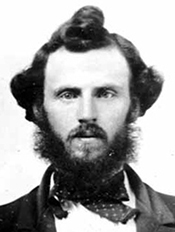
Asa Shinn Mercer traveled by canoe to logging camps to recruit students. As part of his diverse duties as university professor and president, he also worked as a laborer to construct the building that housed the Territorial University. (University of Washington, The Campus History Series, page 11.)
QUESTION 3

On Campus Day, an annual event initiated by Edmond Meany, students and faculty worked together on projects like clearing brush, improving paths and trails, grading lawns, and building or repairing athletic fields. Campus Day became a cherished tradition that lasted three decades. It ended in 1934, during the Great Depression, when the University decided that unemployed men should be paid for work that students had been doing. (University of Washington, The Campus History Series, pages 25-27.)
QUESTION 4

Part of the golf course became a tent city that housed more than 700 Navy men, including some who had recently been students. The space reverted to a golf course after the war. (University of Washington, The Campus History Series, pages 46-47.)
Have you taken our UW Campus History quiz? Below are the answers. See how much you know about the University of Washington.
QUESTION 1
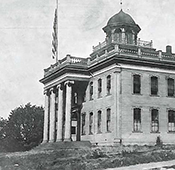
CORRECT ANSWER: A
There were approximately 200 pioneer settlers in Seattle in 1861. The Territorial University, as the UW was then known, served as a primary school as well as a university. In fact, when it opened there were only two college-age students among its 30 students. (University of Washington, The Campus History Series, pages 9-11.)
QUESTION 2

CORRECT ANSWER: C
Asa Shinn Mercer traveled by canoe to logging camps to recruit students. As part of his diverse duties as university professor and president, he also worked as a laborer to construct the building that housed the Territorial University. (QuUniversity of Washington, The Campus History Series, page 11.)
QUESTION 3

CORRECT ANSWER: B
On Campus Day, an annual event initiated by Edmond Meany, students and faculty worked together on projects like clearing brush, grading lawns, and building or repairing athletic fields. Campus Day ended in 1934, during the Great Depression, when the University decided that unemployed men should be paid for work that students had been doing. (University of Washington, The Campus History Series, pages 25-27.)
QUESTION 4

CORRECT ANSWER: D
Part of the golf course became a tent city that housed more than 700 Navy men, including some who had recently been students. The space reverted to a golf course after the war. (University of Washington, The Campus History Series, pages 46-47.)
QUESTION 5
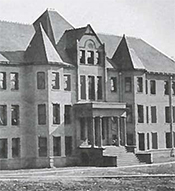
CORRECT ANSWER: A
An influenza epidemic broke out during fall quarter and, because it was often fatal to young people, the quarter that began on October 2 was suspended on October 5 for more than a month. Lewis and Clark Halls, originally built as men's and women's dormitories in 1899, became hospitals during World War I and many students with influenza were treated there. By December, the epidemic had subsided, the war was over, most of the military units had disbanded, and Clark Hall became a women's dormitory again. (University of Washington, The Campus History Series, page 48.)
QUESTION 6

CORRECT ANSWER: D
In April 1920, Caldwell, left, and Suzzallo worked a mule and plow during the ground-breaking ceremony for a new stadium at the University. That December, Dartmouth beat Washington 28-7 at the first game in the new stadium. (University of Washington, The Campus History Series, page 51.)
QUESTION 7
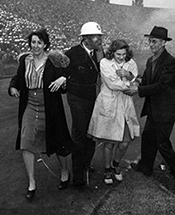
CORRECT ANSWER: A
Seattle was considered a likely target of a Japanese air attack because of the concentration of defense industries in and near the city. During “the Bombing of Seattle,” a preparedness event at Husky Stadium, civilians learned what to do in case of attack, with civil defense workers aiding “victims” of fires, collapsing buildings, and gas attacks. (University of Washington, The Campus History Series, page 75.)
QUESTION 8
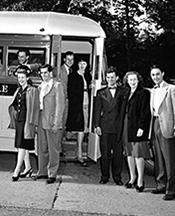
CORRECT ANSWER: C
Through the School of Drama’s performing arts program, students toured the state presenting live theater in schools and community centers. They traveled in a special “touring theatre” bus, carrying all their costumes and equipment with them. (University of Washington, The Campus History Series, page 89.)
QUESTION 9
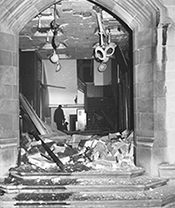
CORRECT ANSWER: C
During the turbulent Vietnam era, a bomb exploded in the vestibule of the Administration Building at 3:30 a.m. on June 19, 1969. No one was injured, but damage was extensive. No person or group was ever identified as being responsible, nor was any motive identified. (University of Washington, The Campus History Series, page 96.)
QUESTION 10

CORRECT ANSWER: B
Students twice marched from campus to Interstate 5, on May 5 and 6, 1970, closing the freeway the first time but not the second. Then, on May 8, Seattle mayor Wes Uhlman closed the freeway express lanes so that 15,000 demonstrators could march from campus to downtown. President Odegaard ordered the University closed twice that month, once after students were killed at Kent State University and again after students were killed at Jackson State. (University of Washington, The Campus History Series, page 97.)
A sit-in was held in President Odegaard's office, but it was held two years earlier and for a different reason. In May 1968 a sit-in was organized by the UW Black Student Union to bring attention to demands for more active recruitment and support of students, faculty, staff, and administrators of color, and for the creation of a Black Studies Program. Read more about the sit-in at UW Today (May 1, 2008).